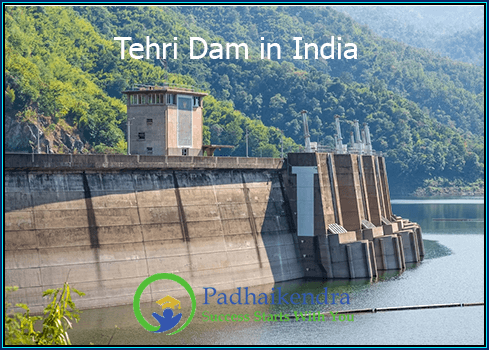What is the Dam?
A dam is a large barrier that is built across a river to control or regulate the flow of water. It is typically constructed using concrete, rocks, and other materials and is designed to hold back water to form a reservoir. Dams are used for a variety of purposes such as hydroelectric power generation, irrigation, flood control, and water storage for drinking, industrial, and agricultural use. While dams have several benefits, they can also have some negative impacts on the environment such as altering the natural flow of rivers, disrupting fish migration patterns, and affecting the habitats of plants and animals.
Types of Dam
- Gravity Dams: These are the most common type of dams and rely on the weight of the dam itself to resist the force of water. They are usually made of concrete or masonry and have a triangular shape. The weight of the dam pushes down on the foundation, which in turn resists the force of water.
- Arch Dams: These are curved dams that rely on the strength of the arch to resist the force of water. They are typically made of concrete and require careful design and construction to ensure that the arch can withstand the forces acting on it.
- Buttress Dams: These dams are similar to gravity dams, but have a series of buttresses or supports on the downstream side. These buttresses provide additional support and help distribute the weight of the dam more evenly.
- Embankment Dams: These dams are made of compacted earth or rock and rely on their sheer size and weight to resist the force of water. They are often used in areas where materials for other types of dams are not readily available.
- Composite Dams: These dams are a combination of two or more types of dams, such as an embankment dam with a concrete face. They are designed to take advantage of the benefits of each type of dam while minimizing their disadvantages.
Major Dams in India
some of the major dams in India. Here is a table that includes information about the highest, longest, oldest, and some other important dams in India:
| Name of Dam | Location | River | Height (m) | Length (m) | Year of Completion | Purpose |
|---|---|---|---|---|---|---|
| Tehri Dam | Uttarakhand | Bhagirathi | 260 | 575 | 2006 | Hydroelectricity, Irrigation |
| Bhakra Dam | Himachal Pradesh | Sutlej | 226 | 520 | 1963 | Hydroelectricity, Irrigation |
| Sardar Sarovar Dam | Gujarat | Narmada | 163 | 1210 | 2017 | Irrigation, Hydroelectricity |
| Hirakud Dam | Odisha | Mahanadi | 61.8 | 25,800 | 1957 | Irrigation, Hydroelectricity |
| Nagarjuna Sagar Dam | Telangana | Krishna | 124 | 4,860 | 1967 | Irrigation, Hydroelectricity |
| Mettur Dam | Tamil Nadu | Cauvery | 65.5 | 1,700 | 1934 | Irrigation, Hydroelectricity |
| Indirasagar Dam | Madhya Pradesh | Narmada | 92 | 653 | 2005 | Hydroelectricity, Irrigation |
| Almatti Dam | Karnataka | Krishna | 52 | 3,869 | 2005 | Irrigation, Hydroelectricity |
| Idukki Dam | Kerala | Periyar | 169 | 366 | 1975 | Hydroelectricity |
| Mullaperiyar Dam | Kerala | Periyar | 53.6 | 1,200 | 1895 | Irrigation, Hydroelectricity |
The List of all dams in India:
| Name of Dam | Location | River Name |
|---|---|---|
| Bhakra Dam | Himachal Pradesh | Sutlej |
| Tehri Dam | Uttarakhand | Bhagirathi |
| Sardar Sarovar Dam | Gujarat | Narmada |
| Hirakud Dam | Odisha | Mahanadi |
| Nagarjuna Sagar Dam | Telangana/Andhra Pradesh | Krishna |
| Mettur Dam | Tamil Nadu | Cauvery |
| Indira Sagar Dam | Madhya Pradesh | Narmada |
| Almatti Dam | Karnataka | Krishna |
| Idukki Dam | Kerala | Periyar |
| Mullaperiyar Dam | Kerala | Periyar |
| Tungabhadra Dam | Karnataka/Andhra Pradesh | Tungabhadra |
| Bhavanisagar Dam | Tamil Nadu | Bhavani |
| Koyna Dam | Maharashtra | Koyna |
| Krishnarajasagar Dam | Karnataka | Kaveri |
| Rihand Dam | Uttar Pradesh | Rihand |
| Srisailam Dam | Telangana/Andhra Pradesh | Krishna |
| Ukai Dam | Gujarat | Tapi |
| Vaitarna Dam | Maharashtra | Vaitarna |
| Wilson Dam | Maharashtra | Pravara |

